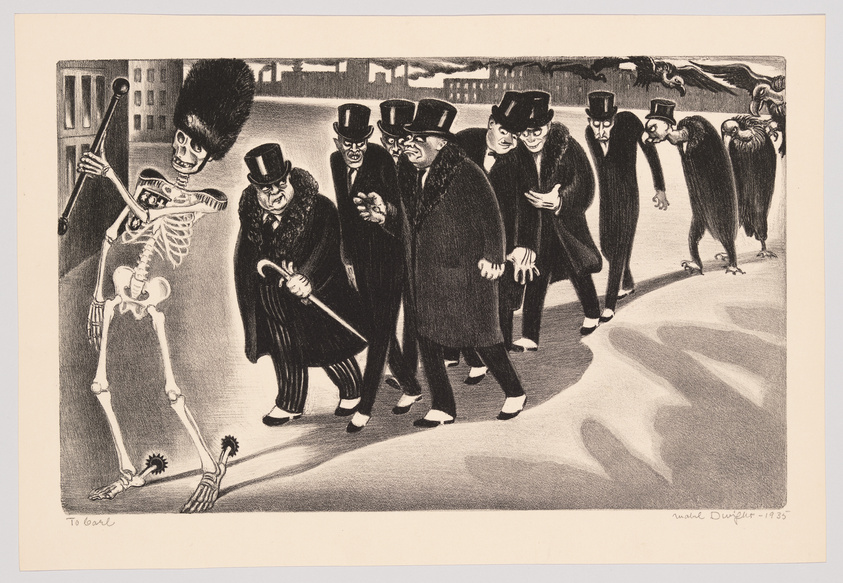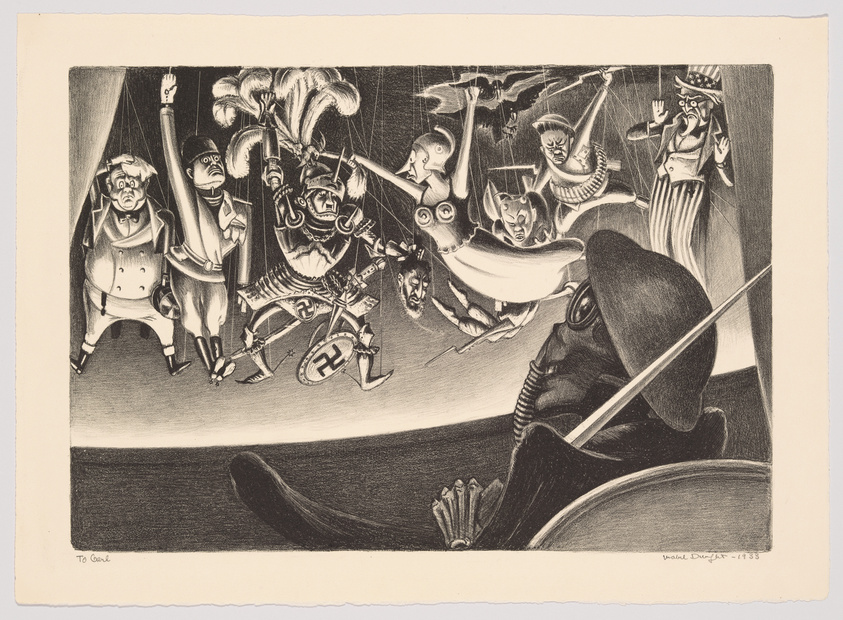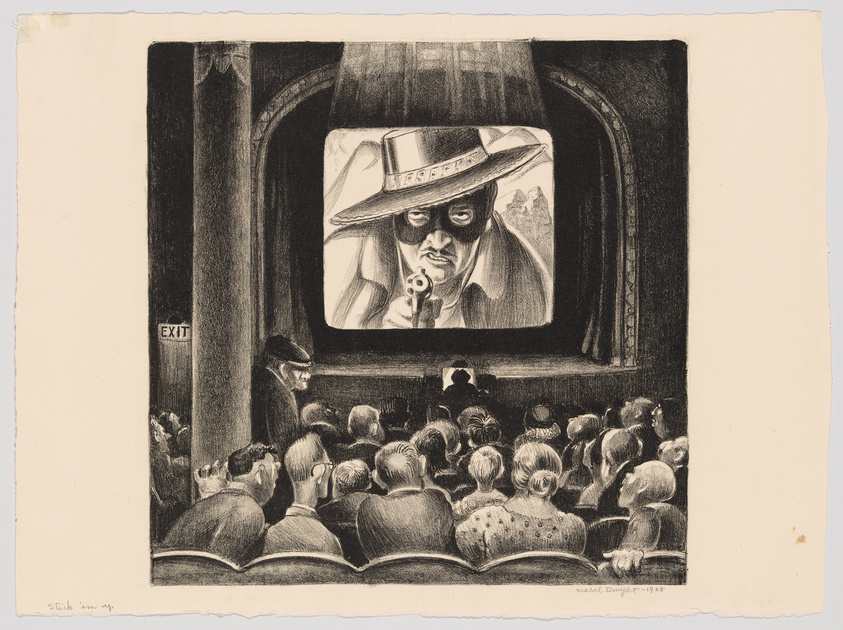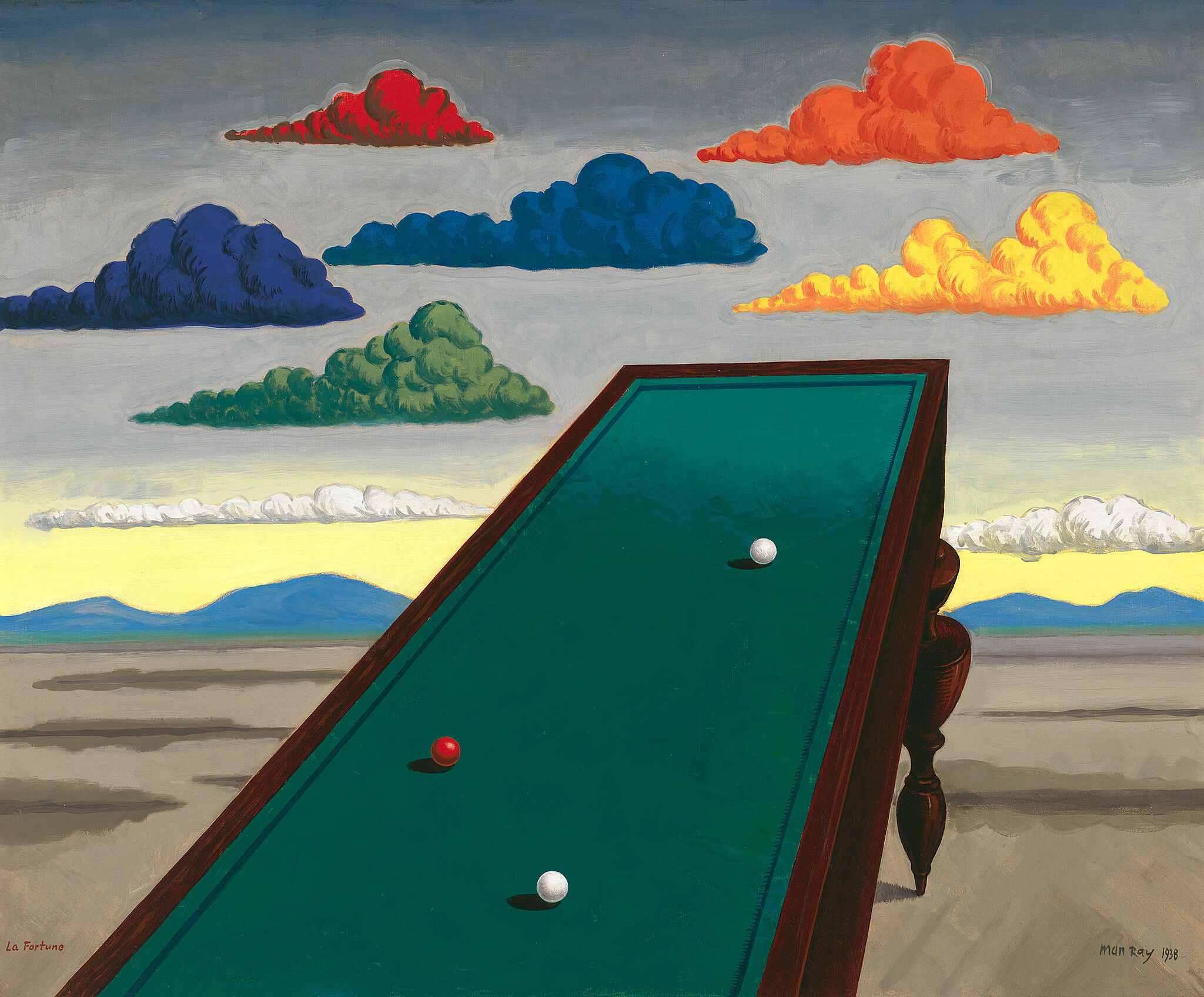Vlog: The Whitney's Collection: Mabel Dwight
Apr 15, 2013
In this video blog (or, "vlog"), educator Lauren Ridloff discusses three lithographs by artist Mabel Dwight, on view in the exhibition Real/Surreal.
The Whitney's Collection: Mabel Dwight
The first piece we'll take a look at today is "Stick 'Em Up", 1928. You see a theatre with the audience staring up at a large movie screen. One thing that makes this piece interesting is that off to the side we can see an "EXIT" sign. Obviously the people can escape if they so choose, but rather they have chosen to stay as willing hostages. This is one example of Mabel Dwight's light humor while looking at everyday life in New York City.
Here is another lithograph by Dwight, called "Aquarium", also made in 1928. What makes this piece comical is noticing the different sizes and shapes of the people, tall, short, fat, and thin, all gawking at the fish who are looking right back. So the question remains... In this picture, who are the real spectators? The people or the fish?
We just looked at two pieces by Dwight that display a humorous lighter look at everyday life in NYC. This third piece is quite different. It shows the full spectrum of Dwight's work. This piece is entitled, "Danse Macabre/Dance of Death" (1933). What makes this different from the other pieces is the feeling of something dark. Here the audience holds just one seated figure, a man, wearing a gas mask with skeletal hands. Death himself is watching the players dance like puppets on a stage. This strange cast of characters is made up of familiar political figures. We see a heavy-set Englishman, as well as Mussolini and Hitler. Both are poised as if ready for war and one holds a decapitated head. We also see French Liberty and Uncle Sam, who seems disgusted by what he sees. Uncle Sam is typically known for saying, "I want You!" but here, he clearly wants no part of what's occurring. So what we see on the stage here just doesn't sit well, it doesn't feel right.
Dwight was deaf and there may be some connection between that fact and how she viewed life. She visited different public places and watched people, jotting down and creating work from her observations. Dwight was the true Spectator.
I'm Lauren Ridloff, thank you for watching.




